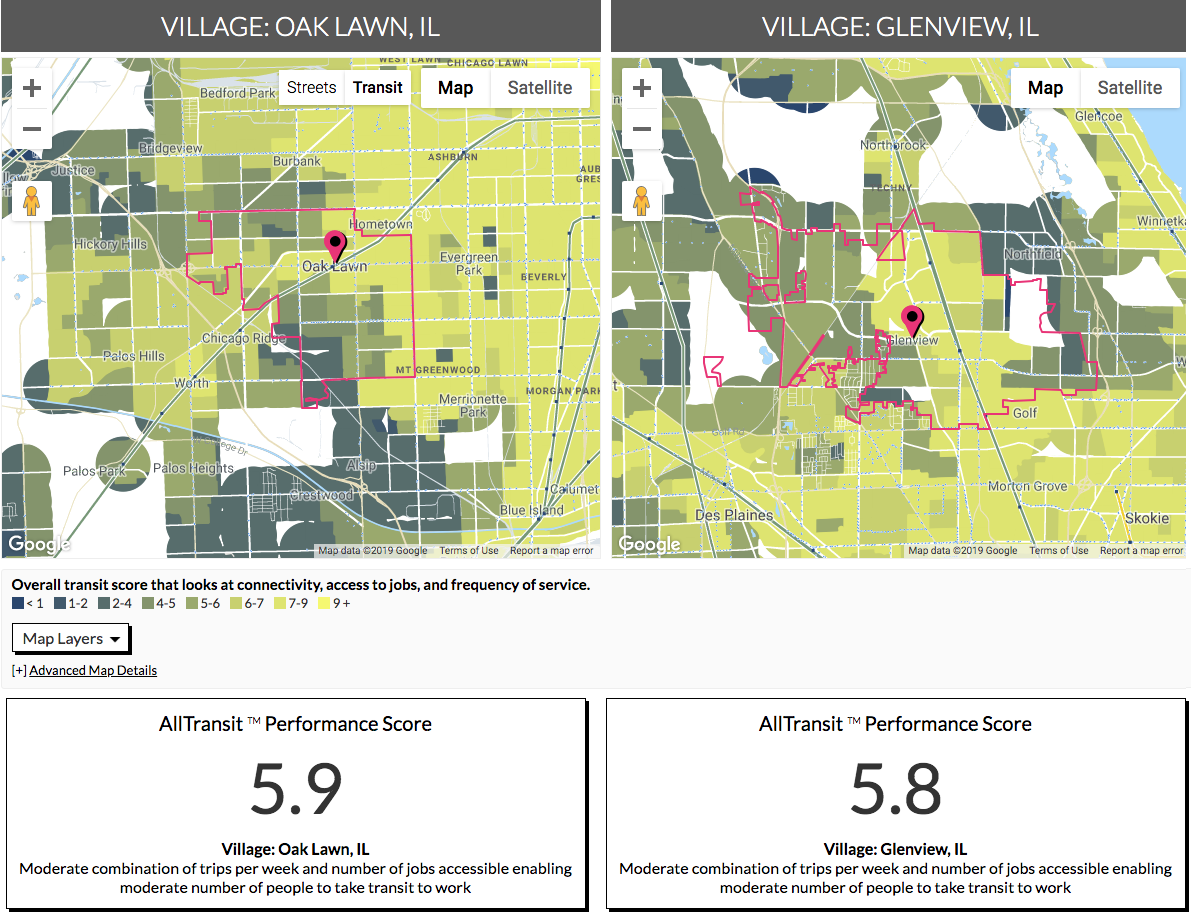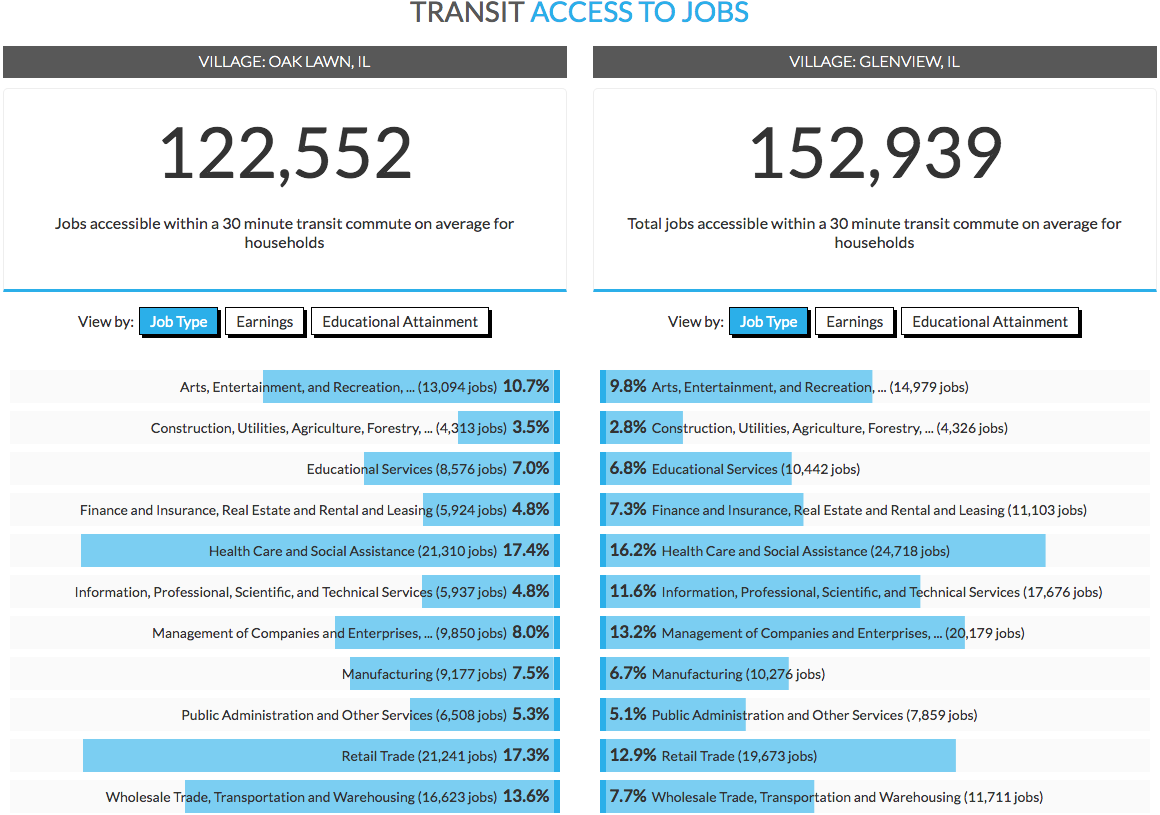Equitable opportunities for city residents are only sustainable through a comprehensive analysis. In an effort to maintain this outcome, we developed a comparison feature of our AllTransit tool. In application, the “Comparison Tool” allows users to measure and compare two locations through a set of diverse data-points. To further explore an application of this feature we look to a comparative study on two Chicagoland suburbs.

fig A: On the transit metrics page, we enter the locations of two suburbs of Chicago, IL: Oak Lawn and Glenview. We click “compare locations” (on the right side of the screen) to begin.

Oak Lawn is a middle-class suburb in Southwest Cook County. It has access to commuter rail (Metra), suburban bus (Pace), and Chicago Transit Authority (CTA) services. Of the four transit routes that serve the village, one is high-frequency and it serves 21% of village residents. Looking Northwest of Chicago, we find the village of Glenview, an affluent suburb with access to commuter rail and suburban bus services. Approximately 12% of the residents here use public transportation (compared to the 9.6% in Oak Lawn). This is a result of the expedited Milwaukee District North commuter line service, as it connects the village to downtown Chicago within 30 minutes.
Another interesting feature from this tool is metric correlation. Figure B displays job accessibility in a 30-minute commute, by sector. Employment in the retail, healthcare, and industrial sectors are those most accessible (by transit) in Oak Lawn. Conversely, in Glenview, nearly half of the jobs accessible to residents are either in healthcare, company management, or retail.

Jobs accessible within a 30 minute transit commute on average for households.
To take this a step further, we direct our attention to Figure C. This infographic helps us gain stronger insights into a business owner’s local market. On average, these businesses are accessible to 31% more customers (via transit) in Oak Lawn than in Glenview. In addition, many of these families earn greater than $75,000 annually, and therefore, are able to contribute more to their local market.

Figure C: Customer households accessible to a business within a 30 minute transit commute.
Figure D conveys a transit-breakdown by time and day. Oak Lawn’s transit service includes a healthy mix of rush hour, midday, and evening trips. In Glenview, we see a contrast in trips, as the majority are taken during rush hour.

Figure D: Transit trips available per week to an average block group.
A commute is more than a simple trip in the modern city. It is a connection to a healthy, sustainable lifestyle and fundamental feature of urban development. It is for that reason, why it is important to consider a wide range of findings in pursuit of a transit-friendly, equitable future.